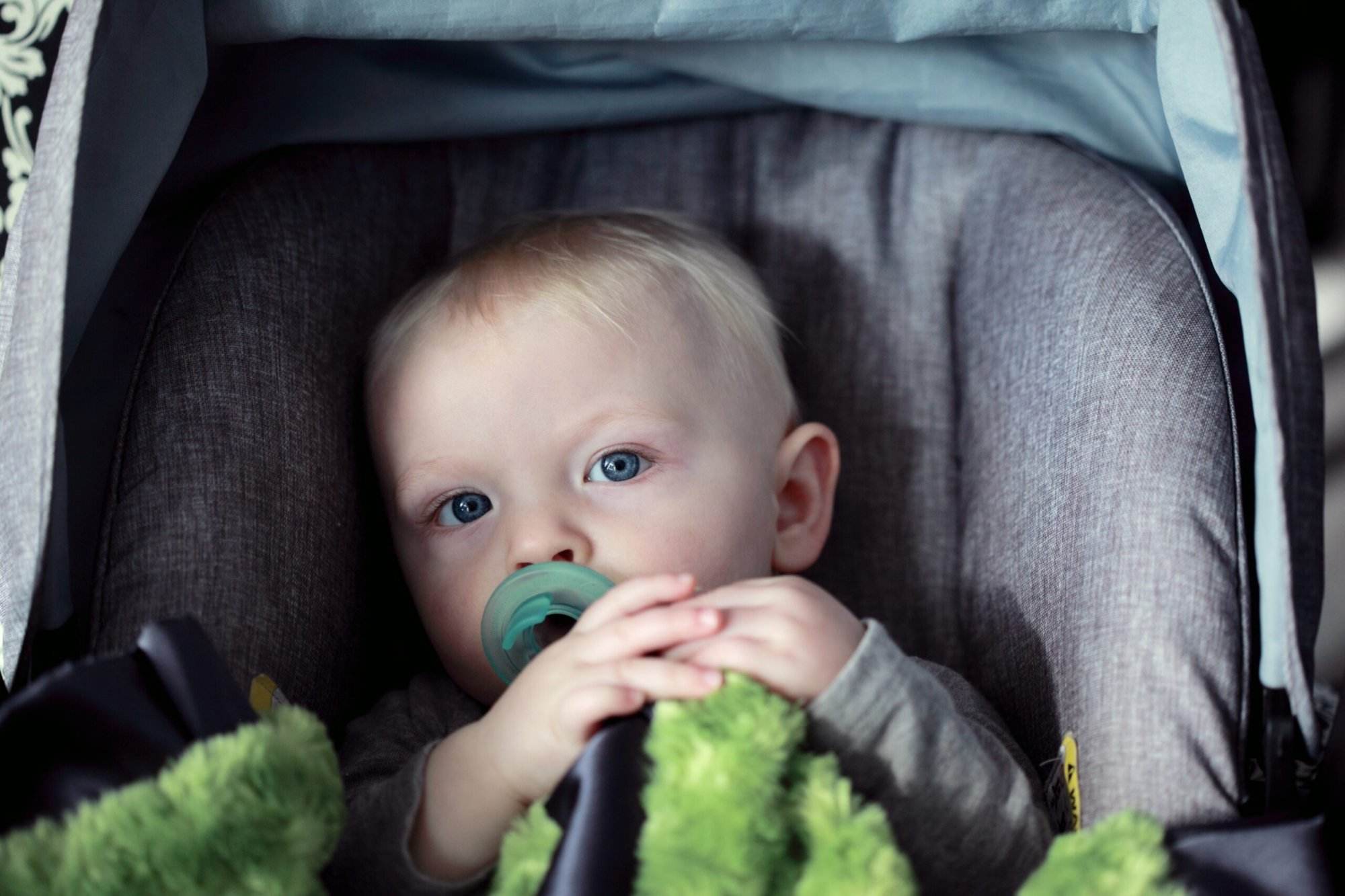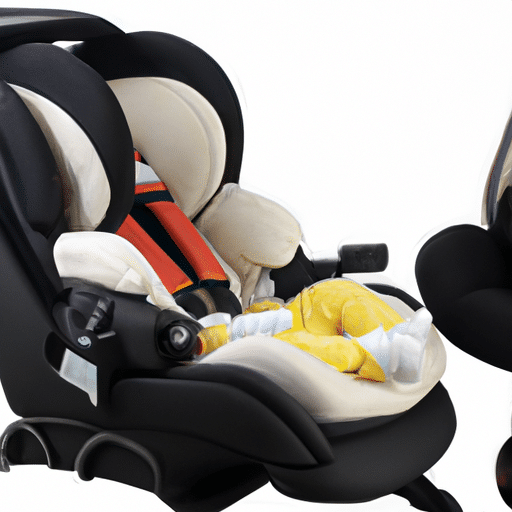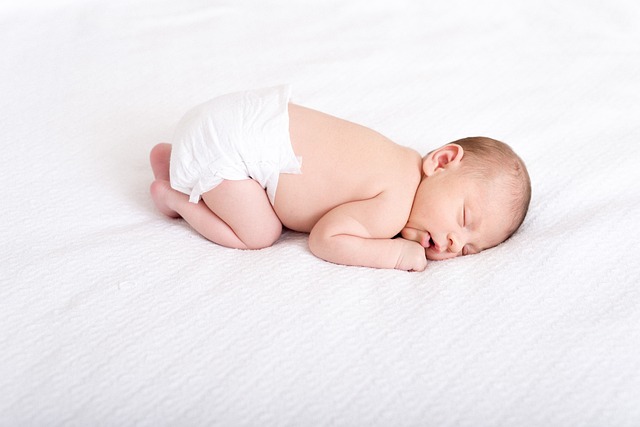Are you a new parent wondering when it’s the right time to switch your baby to a convertible car seat? Look no further! This article will provide you with all the information you need to make the right decision for your little one’s safety and comfort. We’ll explore factors such as age, weight, and height that can help you determine when your baby is ready for the transition. So, keep reading to ensure you’re making the best choice for your child’s car seat journey. Your peace of mind starts here.
1. Understanding convertible car seats
1.1 What is a convertible car seat?
A convertible car seat is a type of car seat that is designed to accommodate infants and young children. It is called “convertible” because it can be used in both rear-facing and forward-facing positions, providing flexibility as your child grows. Convertible car seats typically have higher weight and height limits compared to infant car seats, allowing them to be used for a longer period of time.
1.2 How does a convertible car seat differ from an infant car seat?
While both convertible car seats and infant car seats are designed to keep your child safe in the car, there are some key differences between the two. First and foremost, infant car seats are designed specifically for newborns and young infants and are always installed in a rear-facing position. These seats often come with a detachable base and a carrying handle, which allows for easy transport of the baby outside of the car.
On the other hand, convertible car seats can be used rear-facing initially and then switched to forward-facing when your child meets the weight and height requirements. Unlike infant car seats, convertible car seats don’t have a detachable base or a carrying handle, as they are intended to stay in the car at all times. Additionally, convertible car seats have higher weight and height limits, allowing them to accommodate older and larger children.
1.3 Advantages of using a convertible car seat
Using a convertible car seat has several advantages. Firstly, it eliminates the need to purchase a separate infant car seat, saving you money in the long run. Additionally, convertible car seats can be used for a longer period of time, as they have higher weight and height limits. This means that you won’t need to replace the car seat as frequently as you would with an infant car seat. Moreover, convertible car seats offer the flexibility of rear-facing and forward-facing positions, allowing you to choose the appropriate orientation for your child based on their age and development.
2. Age and weight recommendations
2.1 Minimum weight requirement for a convertible car seat
The minimum weight requirement for a convertible car seat typically varies between brands and models. However, most convertible car seats have a minimum weight limit of around 5 to 6 pounds. It’s important to check the specific weight requirements of your particular car seat, as using a car seat that doesn’t meet the minimum weight requirement can put your child at risk.
2.2 Maximum weight limit for a convertible car seat
Similar to the minimum weight requirement, the maximum weight limit for a convertible car seat also varies depending on the brand and model. Convertible car seats generally have weight limits ranging from 40 to 65 pounds. Once your child reaches the maximum weight limit of the car seat, it’s time to transition to a booster seat or a different type of car seat that is suitable for their weight and age.
2.3 Minimum age recommendation for using a convertible car seat
While there is no strict minimum age requirement for using a convertible car seat, it is generally recommended to keep children rear-facing for as long as possible. The American Academy of Pediatrics (AAP) advises keeping children in a rear-facing position until at least two years of age. However, it’s important to note that each child develops at their own pace, and some may outgrow the rear-facing position before reaching two years old. Always refer to the weight and height limits specified by the car seat manufacturer to determine when to transition.

3. Developmental milestones
3.1 Head and neck control
One important developmental milestone to consider when transitioning to a convertible car seat is your child’s head and neck control. Infants typically gain sufficient head and neck control by around four to six months of age, which is a crucial factor in determining whether they are ready to be placed in a forward-facing position. Before this milestone is reached, the rear-facing position provides better support and protection for the baby’s head, neck, and spine in the event of a collision or sudden stop.
3.2 Sitting independently
Another crucial milestone is your child’s ability to sit independently. This means they can sit upright without any support for a prolonged period of time. Sitting independently is often achieved between six and eight months of age. Once your child can sit unsupported, it indicates that their muscles and skeletal structure have developed enough to handle the forces experienced during a car ride in a forward-facing position.
3.3 Height and weight considerations
In addition to developmental milestones, height and weight should also be taken into account when deciding to transition to a convertible car seat. As your child grows, they may outgrow the height or weight limit of their infant car seat, indicating the need to switch to a convertible car seat. Always ensure that your child fits within the recommended range provided by the car seat manufacturer to ensure their safety and proper restraint while traveling in the car.
4. Safety considerations
4.1 Assessing the safety of the infant car seat
Before making the switch to a convertible car seat, it’s important to assess the safety of your infant car seat. Inspect the seat for any signs of damage, such as cracks or loose straps, and check for any recalls or safety issues associated with the model. The condition and functionality of the infant car seat are crucial for providing optimal protection to your child during car rides.
4.2 Evaluating the fit and comfort of the convertible car seat
When selecting a convertible car seat, it’s essential to ensure that it fits your child properly and provides them with a comfortable riding experience. Check the height and weight limits of the car seat to ensure that your child falls within the recommended range. Additionally, consider the padding, harness system, and adjustment features of the car seat to ensure a secure and comfortable fit for your child.
4.3 Ensuring proper installation and usage of the convertible car seat
Proper installation and usage of the convertible car seat is crucial for your child’s safety. Follow the manufacturer’s instructions carefully to ensure correct installation, whether you choose to install the car seat using the vehicle’s seat belt or the LATCH system. Always double-check that the car seat is securely installed and that the harness straps are properly adjusted to fit your child snugly. Regularly inspect the car seat for any signs of wear or damage and make any necessary adjustments or replacements.

5. Transitioning from an infant car seat
5.1 Signs it may be time to transition
There are several signs that indicate it may be time to transition from an infant car seat to a convertible car seat. Firstly, if your child has reached the height or weight limit specified by the infant car seat manufacturer, it’s essential to transition to a car seat that can accommodate their growing size. Additionally, if your child has achieved the necessary developmental milestones, such as head and neck control and sitting independently, it may be time to make the switch.
5.2 Steps for a smooth transition
To ensure a smooth transition from an infant car seat to a convertible car seat, follow these steps:
- Research and choose a suitable convertible car seat based on your child’s height, weight, and age.
- Familiarize yourself with the proper installation and usage instructions provided by the car seat manufacturer.
- Remove the infant car seat from the vehicle and thoroughly clean it before storage or future use.
- Install the convertible car seat in the appropriate position (rear-facing or forward-facing) according to your child’s age, weight, and height.
- Adjust the harness straps and ensure they are snugly secured around your child.
- Test the car seat’s stability and movement by giving it a gentle shake from side to side and front to back.
- Make any necessary adjustments to the convertible car seat to ensure a safe and comfortable fit for your child.
5.3 Tips for adjusting to the new car seat
Adjusting to a new car seat can be a little challenging for both you and your child. To ease the transition, consider these tips:
- Introduce the new car seat gradually, allowing your child to sit in it and explore it in a non-threatening environment before the first car ride.
- Provide comfort items such as soft toys, blankets, or pillows to help your child feel secure and at ease in the new car seat.
- Plan shorter car rides initially to help your child acclimate to the new seating arrangement.
- Engage your child with distractions such as their favorite toys or music to keep them occupied and content during car rides.
- Monitor your child’s comfort and adjust the straps and positioning as needed to ensure their safety and well-being.
6. Extended rear-facing options
6.1 Benefits of extended rear-facing
Extended rear-facing is the practice of keeping a child in a rear-facing position for an extended period, often beyond two years of age. This practice offers several benefits, including enhanced protection for the head, neck, and spine in the event of a collision. Rear-facing car seats distribute the forces of a crash evenly across the child’s back, significantly reducing the risk of serious injuries. It also provides more legroom and a comfortable riding experience for the child.
6.2 Recommended age and weight for rear-facing
While it’s generally recommended to keep children rear-facing until at least two years of age, some convertible car seats allow for extended rear-facing options. These car seats have higher weight and height limits, allowing children to remain rear-facing for a longer duration. It’s important to review the specific weight and height limits provided by the convertible car seat manufacturer to determine when to transition to a forward-facing position.
6.3 Choosing the right convertible car seat for extended rear-facing
When selecting a convertible car seat for extended rear-facing, consider the following factors:
- Weight and height limits: Look for a car seat with high weight and height limits to accommodate your child for a longer duration.
- Recline options: Check if the car seat offers multiple recline positions to ensure proper positioning and comfort for your child.
- Installation features: Choose a car seat with user-friendly installation features, such as easy-to-use LATCH systems or clear instructions for seat belt installation.
- Comfort and support: Consider the padding, adjustable headrest, and harness system of the car seat to provide optimal comfort and support for your child during extended rear-facing.

7. Forward-facing considerations
7.1 Age and weight requirements for forward-facing
When transitioning to a forward-facing position, it’s important to consider the age and weight requirements provided by the convertible car seat manufacturer. While the minimum age and weight requirements can vary, it is generally recommended to keep children rear-facing until at least two years of age. However, if your child has reached the maximum rear-facing weight limit or the height limit specified by the car seat manufacturer, it may be time to switch to a forward-facing position.
7.2 Proper positioning and restraint system
To ensure proper positioning and optimal protection when forward-facing, the car seat’s restraint system must be correctly adjusted. The shoulder straps should be positioned at or above your child’s shoulders, and the chest clip should be positioned at armpit level. Double-check that the straps are snugly secured and that there is no excess slack, as this can compromise the effectiveness of the harness system in the event of a collision.
7.3 Choosing a convertible car seat suitable for forward-facing
When selecting a convertible car seat suitable for forward-facing, consider the following factors:
- Weight and height limits: Ensure that the car seat accommodates your child’s weight and height requirements in the forward-facing position.
- Harness system: Look for a car seat with an adjustable harness system that allows for proper positioning and secure fit as your child grows.
- Side-impact protection: Consider car seats that offer enhanced side-impact protection to further safeguard your child in the event of a collision.
- Installation features: Ensure that the car seat offers user-friendly installation features, making it easy to install and secure in your vehicle.
8. Additional factors to consider
8.1 Number of children
If you have multiple children who require car seats, it’s important to consider the dimensions and configuration of your vehicle. Some convertible car seats may be wider or bulkier, limiting the number of car seats that can be safely installed side by side. Additionally, consider the weight limitations of your vehicle and the available anchor points for securing the car seats. Planning and selecting car seats that fit your specific vehicle and family dynamics can help ensure a safe and comfortable travel experience for everyone.
8.2 Travel preferences
Your travel preferences, such as the frequency and duration of car rides, may influence your choice of a convertible car seat. If you frequently travel long distances, prioritize car seats that provide enhanced comfort and support. Consider features such as multiple recline positions, ample padding, and adjustable headrests to ensure your child’s comfort during extended car rides. Additionally, if you frequently travel by air, choose a convertible car seat that is FAA-approved for use on airplanes.
8.3 Budget considerations
Convertible car seats can vary in price, and it’s important to consider your budget when making a purchase. While it’s essential to prioritize safety and quality, there are convertible car seats available at various price points that meet industry standards and offer the necessary features for child safety and comfort. Research different brands and models, read reviews, and compare prices to find a convertible car seat that fits your budget without compromising on safety.

9. Expert recommendations and guidelines
9.1 American Academy of Pediatrics (AAP)
The American Academy of Pediatrics (AAP) provides guidelines and recommendations for child passenger safety. These guidelines focus on maximizing the safety of infants and children during car rides. The AAP advises keeping children in a rear-facing position until at least two years of age or until they reach the weight and height limits specified by the car seat manufacturer. They also recommend transitioning to a forward-facing position only when the child outgrows the rear-facing car seat.
9.2 National Highway Traffic Safety Administration (NHTSA)
The National Highway Traffic Safety Administration (NHTSA) is a government agency that sets safety standards and provides information on child passenger safety. The NHTSA recommends keeping children rear-facing as long as possible, ideally until they reach the maximum weight or height limit of their rear-facing car seat. They emphasize that rear-facing car seats provide better protection for young children due to their anatomy and the forces involved in a collision.
9.3 Child Passenger Safety Technicians (CPSTs)
Child Passenger Safety Technicians (CPSTs) are certified professionals trained in the installation and usage of child car seats. They are highly knowledgeable in the field of child passenger safety and can provide expert advice and assistance in selecting and properly installing convertible car seats. CPSTs can help ensure that your child is correctly restrained and protected during car rides, reducing the risk of injury in case of an accident.
10. Frequently asked questions
10.1 Can I use a convertible car seat for a newborn?
Yes, many convertible car seats are suitable for newborns. However, it’s important to ensure that the car seat meets the minimum weight requirement specified by the manufacturer. Additionally, select a convertible car seat that offers multiple recline positions to provide optimal support and positioning for a newborn.
10.2 How long can you use a convertible car seat?
The length of time you can use a convertible car seat depends on the weight and height limits specified by the manufacturer. Some convertible car seats can be used from birth all the way until your child reaches 65 pounds or more. It’s crucial to follow the manufacturer’s guidelines, regularly inspect the car seat for wear and tear, and make the necessary adjustments or replacements when your child outgrows the car seat.
10.3 Can I install a convertible car seat in any car?
Most convertible car seats can be installed in a wide range of vehicles, including sedans, SUVs, and minivans. However, it’s important to check the dimensions and requirements of both the car seat and your vehicle to ensure compatibility. Some vehicles may have unique challenges, such as narrow back seats or incompatible seat belt systems, which may require additional accessories or professional assistance to properly install the car seat. Always consult the car seat manufacturer’s instructions and consider consulting a Child Passenger Safety Technician (CPST) for guidance if needed.






